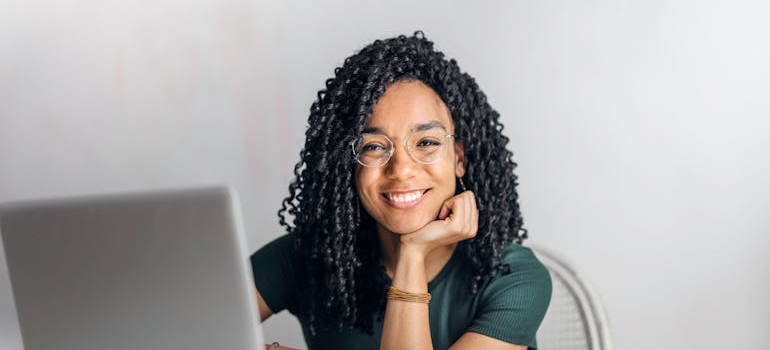Real estate trends across Maryland in 2025 reflect changing priorities. Economic growth has boosted demand, but preferences are shifting. More buyers want space and flexibility, pushing interest toward suburban areas. At the same time, remote work continues to affect how and where people choose to live. This has led to new patterns in pricing, location demand, and investment strategies. Urban centers still hold value, but buyers now weigh commute times and work-from-home setups differently. As these shifts play out, movers in DC area are seeing increased activity from people relocating for work, lifestyle, or affordability. Understanding these patterns helps buyers, sellers, and investors stay ahead. This article explores how Maryland’s market is evolving and what to expect next.
Follow the market trends and pick the right area!
Real estate trends across Maryland in 2025 show steady demand, driven by job growth and changing living preferences. Buyers continue to look beyond urban centers, which has shifted interest toward smaller cities and suburban areas. The average home price now stands at around $415,000, showing a moderate increase over the past year. Inventory remains tight, especially in counties close to Washington, DC. Remote work still plays a major role in shaping buyer behavior. Many people want homes with office space, better privacy, and access to outdoor areas. This shift has created new pressure on moving companies Maryland residents rely on for local and interstate moves. Rising interest rates have slowed some purchases, but serious buyers continue to act quickly. Investors are also active, especially in rental properties near universities and transit lines.
Cities to follow
Real estate trends across Maryland in 2025 show rising demand in several urban areas. Baltimore continues to attract buyers with new developments, tech jobs, and better housing prices compared to nearby cities. Silver Spring has also gained attention, especially among young professionals and remote workers looking for easy access to Washington, DC. If you’re thinking about moving soon, here are a few places to watch:
- Baltimore: Steady job growth and affordable homes. Median price of a home here stands at around $215,000;
- Silver Spring: Strong rental market and easy Metro access. You can find a home for a median price of
- Rockville: Popular with families and professionals. Expect to find a home for a median price of $633,000;
- Frederick: Expanding housing market with a small-town feel. And lastly, here, the median price of a home is close to $430,000.
These cities offer a mix of job opportunities, public transport, and growing rental markets. That’s why local movers MD community commonly endorse staying busy with constant demand. Buyers and renters are focusing on places that balance convenience with affordability. Prices in these cities are rising, but still, they are generally considered to have good value. Each of these cities shows strong signs of continued growth.
Why are the prices rising so rapidly?
Home prices in Maryland are rising fast due to strong demand and limited supply. The state’s median household income sits around $95,000, which supports higher purchasing power. This financial strength gives buyers more room to compete. At the same time, Maryland’s location near major economic hubs makes it a great place to grow a business. The state attracts entrepreneurs and established companies alike. Industries such as healthcare, cybersecurity, and biotech continue to expand, pulling in new workers and boosting housing demand. That puts added pressure on local markets, especially in cities with good schools and easy commutes.

As more people move in from other states, long distance movers MD residents trust are seeing more bookings. Buyers need to act fast to secure properties, which drives prices even higher. Investors are also active, hoping to benefit from future growth. All of this keeps Maryland’s housing market moving at a fast and competitive pace.
Cities with the highest growth in prices
Real estate trends across Maryland in 2025 show clear price growth in several cities and regions. Buyers are competing for fewer homes, while high incomes and job opportunities keep demand strong. Areas close to Washington, DC and Baltimore see the biggest jumps. Suburban towns with good schools and transit access are also heating up. New developments and strong interest from remote workers play a big part in this trend. As more people leave high-cost cities in nearby states, demand continues to rise across Maryland. Here are some of the places seeing fast home price growth:
- Silver Spring: Close to DC, with Metro access and strong job demand;
- Columbia: Popular for families, with quality schools and planned communities;
- Rockville: Strong tech presence and quick commutes;
- Bethesda: High-income buyers driving prices up;
- Frederick: Offers more space and growing industries nearby.
If you decide to move to Frederick, make sure you do so with the best movers in Frederick MD! These cities remain competitive as buyers seek long-term value. Demand keeps climbing, and sellers hold the advantage in many of these areas.
The appeal of Maryland’s quiet communities
Suburban growth in Maryland shows no signs of slowing. Areas like Frederick, Columbia, and Ellicott City continue to attract new buyers. People want more space, safer neighborhoods, and less noise. Remote work has made these goals easier to reach. Commuters still appreciate being close to Baltimore or DC, but without the pressure of city prices. Germantown and Waldorf are also gaining attention due to steady job growth and new schools.

These communities offer newer homes, local parks, and reliable services. Buyers with families or long-term plans often skip city condos and head straight for the suburbs. That shift keeps residential movers MD companies busy year-round. Demand rises fastest in places with good transit, stable pricing, and nearby healthcare. Local governments have responded with new housing projects and expanded services. These changes support continued growth. As more people look for a quiet place to live, Maryland’s suburban regions will keep expanding to meet the need.
The role of remote work in shaping real estate preferences
Remote work has changed how people buy homes across Maryland. Buyers now place less weight on daily commutes and more on comfort, space, and privacy. Many want home offices, bigger yards, and quiet surroundings. This shift has moved interest from city centers to suburbs and smaller towns. Places like Mount Airy, Edgewater, and La Plata are drawing more attention. These areas offer lower prices, larger homes, and good internet access.

As more companies adopt flexible work policies, workers are spreading out. They are no longer tied to living near their office buildings. This change has helped shape real estate trends across Maryland in 2025. Demand is high in places that support a remote lifestyle while still offering quick access to city resources. Homebuyers also look for strong school districts and walkable neighborhoods. As remote work continues, this trend is likely to hold. Buyers will keep choosing locations that match both their work needs and lifestyle goals.
Modern living in Maryland’s expanding areas
New housing developments are spreading fast across Maryland. Builders are responding to high demand by creating modern neighborhoods with better access, updated features, and more space. Areas like Urbana, Odenton, and Bel Air now offer new residential options with parks, schools, and retail centers close by. Buyers want homes that fit today’s needs, offices, open layouts, and energy efficiency. Planned communities meet those goals, making them attractive to young families and remote workers. These projects also bring in new services and help boost local economies.

Local government supports growth through zoning changes and infrastructure upgrades. As a result, many of these areas are growing quickly and drawing attention from investors. Real estate trends across Maryland in 2025 reflect this shift. More buyers prefer newly built homes over older ones that need upgrades. The pace of construction remains strong, and many buyers are willing to wait for the right home in these expanding regions. Demand keeps growing.
Affordable housing trends
Affordable housing remains a key concern as prices rise across Maryland. While demand keeps climbing, some areas continue to offer value. Plenty of cities still provide options for buyers with tighter budgets. Local governments support affordability with tax credits, rent caps, and housing programs. Builders are also responding with smaller units and townhomes to keep costs down. At the same time, buyers are expanding their search outside major cities. This shift creates more traffic for movers in Lanham MD, so make sure you book your movers on time! Affordability varies, but these locations stand out:
- Hagerstown: Lower home prices and growing investment in infrastructure
- Lanham: Strong rental market and active local housing programs
- Cumberland: Quiet area with budget-friendly listings
- Aberdeen: Accessible from Baltimore with stable pricing
- La Plata: Popular with first-time buyers and commuters
Real estate values will likely continue to rise, but these towns help buyers stay in the market. As more people prioritize cost over location, demand in these areas will likely grow.
The luxurious areas of the state
Luxury real estate is booming in Maryland, especially in high-demand areas with waterfront views and private communities. Buyers want more space, top amenities, and privacy, which fuels growth in exclusive parts of the state. Bethesda stands out with a median home price near $1.2 million. Its schools, shops, and proximity to Washington, DC make it a top choice. This surge keeps moving companies Bethesda locals rely on busy year-round. Annapolis and Severna Park also see strong interest, especially near the water. Buyers there look for docks, smart home features, and gated access. Along the Eastern Shore, high-end homes are selling faster than in previous years. Areas near Kent Island and St. Michaels continue to draw interest from second-home buyers and investors. Many luxury properties now include home offices, gyms, and outdoor entertainment spaces. As demand rises, developers respond with custom builds and updated designs.

Trends in commercial real estate
Commercial real estate is changing fast across Maryland. Offices, retail spaces, and warehouses are shifting to meet new business needs. Mixed-use buildings and coworking hubs are becoming more common. This supports startups and remote-friendly companies that want flexible space without long leases. Real estate trends across Maryland in 2025 show a rise in suburban business development, especially near highways and growing neighborhoods. Places like Annapolis and Columbia are gaining new offices, restaurants, and logistics centers. This growth creates jobs and attracts skilled workers from nearby states. As more people move for work, movers Annapolis MD inhabitants trust are helping families settle close to new job sites. Business owners benefit from lower overhead outside of city centers. Workers enjoy shorter commutes and access to more affordable housing. These changes strengthen local economies and help smaller cities grow.

Predictions for Maryland’s real estate market
Real estate trends across Maryland in 2025 suggest continued growth, though at a slower pace than recent years. Experts expect prices to remain high in areas with job growth and strong schools. Suburban and semi-rural towns will likely see more buyers as remote work stays common. New construction may help ease pressure, but inventory will stay tight. Buyers should act early, get pre-approved, and know what they can afford. Rising interest rates may affect budgets, so flexibility will be key. Markets like Bethesda and Columbia will stay competitive. More affordable towns, including Hagerstown and Salisbury, could attract new attention from first-time buyers. Waterfront and high-end homes will continue to draw interest, especially near Annapolis. People planning to move should follow local market changes and prepare ahead. The state’s strong job base, steady economy, and demand for housing suggest the market won’t cool off quickly. Buyers should plan with care and stay ready to move fast.


